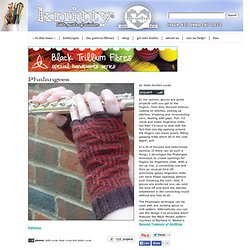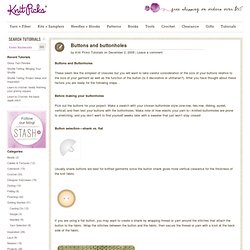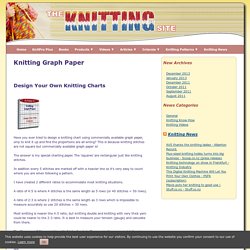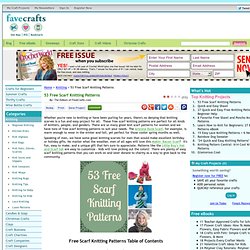

Super Soft Merino Hats. I love the boisterous song that the colors of Super Soft Merino sing together, like the refrain that a group of merry hikers might belt out through a snow-covered forest!

And what better way to have some fun with color than to knit up a whole gaggle of hats? Looking at them all together, I imagine a lollipop shop where all the surfaces are white and all the lollipops bob around with their candy bright heads! On Christmas morning, when all the wrapping paper is off these hats, I love that my whole family will be left with the same happy thoughts as I'm having now.
What good cheer and warm feelings to bring to a holiday gathering! Of course, an added bonus is that nothing's faster to knit than a hat, and one that knits up at three stitches to the inch is, well, even faster! The Materials Purl Soho's Super Soft Merino, 100% merino wool, 87 yards per skein. Baby - about 36 yardsToddler - about 47 yardsKid - about 58 yardsWomen's - about 69 yardsMen's - about 80 yards. Lace Knitting Stitches.
Picking Up Stitches. Picking up stitches means that, with a knitting needle or crochet hook and a new strand of yarn, you dip into and out of the edge of the knitted fabric at hand, creating new loops.

These new loops will serve as the foundation for a collar, button band, sleeve or baby bootie instep. FF: Choosing the right size. Sweater knitting and suit shopping have something in common: If a sweater doesn’t fit your shoulders, it will never ever look good.

But sweater patterns are sized by the bust, not the shoulders. So how do you ensure a proper fit? Phalangees fingered gloves technique. The Phalangee Technique With this new technique, the process of working individual thumbs and fingers for mittens and gloves is radically changed.

The stitches that make up the sides of fingers that would normally be cast on (or picked up over cast on stitches) in a standard glove pattern are added as increases between the fingers. In the case of the thumb, these extra stitches replace the stitches that would be cast on/picked up over the palm-side opening in the hand. Once these new stitches are established, new mini-rounds for the thumb/fingers are created by connecting stitches across opposite sides of the work. These individual fingers/thumb rounds can then be worked in place leaving the rest of the round stitches live. A couple of notes for those who wish to use the technique with an existing pattern: The gloves should be worked on 1 or 2 circular needles - DPNs do not flex to permit the connections. Then a connecting round is worked. Twisted German Cast On video here. Buttons and Buttonholes. Buttons and Buttonholes These seem like the simplest of closures but you will want to take careful consideration of the size of your buttons relative to the size of your garment as well as the function of the button (is it decorative or utilitarian?).

After you have thought about these factors you are ready for the following steps… Before making your buttonholes Pick out the buttons for your project. Make a swatch with your chosen buttonhole style (one-row, two-row, ribbing, eyelet, vertical) and then test your buttons with the buttonholes. Knit Simple Magazine. Like making a gauge swatch, blocking is one of those essential steps that knitters tend to roll their eyes at.

It may not be as much fun as choosing colors and textures, and it certainly does not have the meditative rhythm of stitching, but without blocking, your perfectly knit garment will look sloppy. So, please, pull out that blocking equipment and follow along as we teach you the ins and outs (and ups and downs) of molding your knitted pieces into shape. There are two main categories of blocking: wet and steam. To know which one to use with your particular yarn, consult the pressing guide below. Before beginning either method, gather up any schematics or measurements from the pattern, and use them like architect’s plans to know exactly how far the pieces should stretch and where they should dip and swell. Wet Blocking Steam Blocking To block with steam, first pin the pieces on a flat surface according to the schematics. Knit Me Happy. Knitting Graph Paper. Have you ever tried to design a knitting chart using commercially available graph paper, only to knit it up and find the proportions are all wrong?

This is because knitting stitches are not square but commercially available graph paper is! The answer is my special charting paper. The ‘squares’ are rectangular just like knitting stitches. In addition every 5 stitches are marked off with a heavier line so it’s very easy to count where you are when following a pattern. I have created 2 different ratios to accommodate most knitting situations. Cables. Stitch Pattern Library.
46 Free Scarf Knitting Patterns. There are currently no images from other crafters. close Terms & Conditions You must enter into this Agreement if you want to submit digital images or other content to Prime Publishing through Sharing Customer Images (the "Service").

As used in this Agreement, "we" or "Prime Publishing" means Prime Publishing, LLC. and "you" means the individual or entity submitting materials to Prime Publishing. Any individual or entity that wants to use the Service must accept the terms of this Agreement without change. 1) Eligibility. 2) Definitions. 3) License Grant for Materials. 4) Removal of Materials. 5) License for Name, Trademarks and Likenesses. 6) Specifications and Guidelines. 7) Representations, Warranties and Indemnities. 8) Restrictions. 9) No Obligation. 10) Changes to Agreement. 11) Prime Publishing Intellectual Property. 12) Communications. 13) Waiver. 14) Disclaimer. 15) Miscellaneous.
Sharing Your Own Images Who can share images? You! What should I share? What shouldn't I share? Free knitting patterns. Knitting Toys & Ornaments. Free patterns (Elite Yarns) Free Patterns (KnittingHelp) Free Patterns (KnitPicks) NobleKnits Knitting Blog. Please Don't Eat the Daisies!